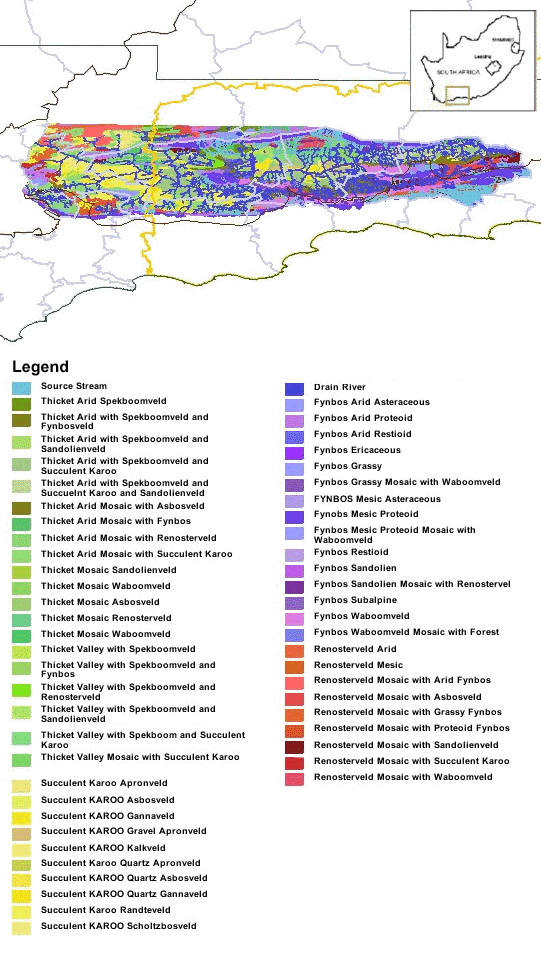
A Convergence of Floral Kingdoms

The Pig’s Ear Succulent, Cotyledon orbiculata, growing from a rocky outrop at Rooikatkloof. Photo by D.J. Long.
Plant diversity in the Klein Karoo is some of the highest in the world. Complexly-folded strata of Paleozoic & Mesozoic marine sediments, granite, and occasional igneous rocks provide the basis for a wide range of soil types. The topography consists of an expansive texture of mountains, valleys, rolling hills, rocky mesas, flat plains, and a maze of small drainage systems. Added to this is the convergence of the hot, dry continental desert climate to the north, and the cool, moist oceanic climate to the south, creating a high degree of seasonal variability and many local microclimates. It is here where the mega-ecotone of the Succulent Karoo and the Cape Floristic provinces intermingle. In all, this variable region supports six different biomes, and a stunning 55 distinct habitat types in a complex mosaic across the landscape. Roughly half of the plant species are endemic to the South African Cape region, and many of them are found only in the Klein Karoo and nowhere else in the world. The richness of the region’s flora supports the Klein Karoo’s diverse animal fauna.

The spring-blooming succulent Delosperma sp. from Lulufontein. Photo by P.M. Schulz.
Succulents, acacia trees, perennial & annual wildlflowers, drought-resistant shrubs, and desert-adapted grasses compose the dominant flora of the Succulent Karoo. The Mediterranean-type vegetation of the Cape Floristic province consist largely of Fynbos plants; these are fire-adapted shrubs, herbs, perennial wildflowers, solitary grasses, evergreen woodlands, and the characteristic South African Proteas.

Map of the complex habitat mosaic within the Klein Karoo, courtesy of the South African National Biodiversity Institute.
